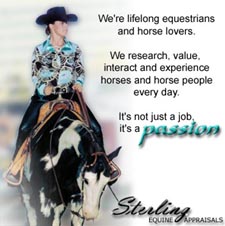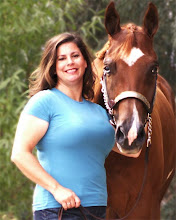Do you know “Dr. Green?” He’s a euphuism for time-off, stall rest, and limited turn out. Not long ago, veterinarians were quick to recommend Dr. Green if your horse suffered a significant injury. More importantly, these animals frequently become injured when they are at the peak of performance and physical condition. The process of injury, healing, and repair often takes its toll on performance and condition adding more time to the goal of return to service. Your horse’s value may plummet given this uncertainty.
As appraisers, we inquire about a horse’s soundness and veterinary history. I have seen an increase in the number of previously injured horses we’re appraising who are now returning to full work. If a horse has healed, and the injury is not likely to reoccur, the horse may be considered serviceably sound. Each case is unique, and we always consult with veterinarians and experts, but often a horse returned to full work will be valued similarly to before the injury (less any momentum in training or competition that may have occurred).
I am not a veterinarian, but I am fascinated by the advances in equine health care, especially in regards to injury recovery and prevention. Simply put, with advances in regenerative medicine and rising popularity of rehabilitation clinics, there are many more options for your horse to recover fully.
Regenerative medicine includes stem cells, platelet rich plasma (PRP), autologous conditioned serum (ACS), and extracellular matrix (ECM). Variations of these treatments are being offered throughout the country with more speed and precision than ever before. The idea of using these devices for tendon or ligament repair is to improve quality and reduce time of healing by influencing the body’s own wound repair process. Using these regenerative techniques, alone or in combination, appears to be improving the recovery rate and return to performance of horses in a wide range of disciplines.
The choices you make about treatment and rehabilitation can markedly affect the value of your horse - and if he will be able to return to peak performance. For example, without regenerative medicine, lesions of the tendon or ligament tend to take longer to heal, with less parallel orientation of the fibers, and often incompletely, leaving pockets of fluid surrounded by irregular scar tissue. Such tendons or ligaments are not as functional as the original, un-injured organ. With regenerative medicine, these lesions appear to heal with more parallel fiber alignment and similar architecture to the original tendon (as viewed on ultrasound).
Even with the advances made in the field of regenerative medicine, the task of rehabilitating the injured horse remains a challenge. Simply turning a horse out into a pasture or standing it in a stall for months on end is impractical for most horse owners. Once an injury begins to heal, architectural restoration alone will not resolve the problem. Those new cells must be conditioned (or “taught”) to function as well as or better compared to the original.
So how do those new cells get taught? Farms specializing in rehabilitation are gaining popularity across the country. Working closely with your veterinarian, farrier, nutritionist and other equine experts, these rehabilitation clinics help to recondition your horse. Depending on the injury and the individual horse’s needs, a systematic approach to reconditioning may involve swimming, aqua-treadmill, regular treadmill, vibration therapy, good old fashioned hand walking and other alternatives like chiropractors or equine message therapy.
Now, the responsibility is on you as a horse owner. Talk to your veterinarian and look up “equine rehabilitation” for your State or area on Google. If you chose some of these alternative therapies, you may just return your horse to his prior winning form.
(Thanks to Pacific Crest Equine and Annadale Equine Center for some of the details used in this posting.)
Monday, August 23, 2010
Meet Dr. Green
Subscribe to:
Post Comments (Atom)



No comments:
Post a Comment